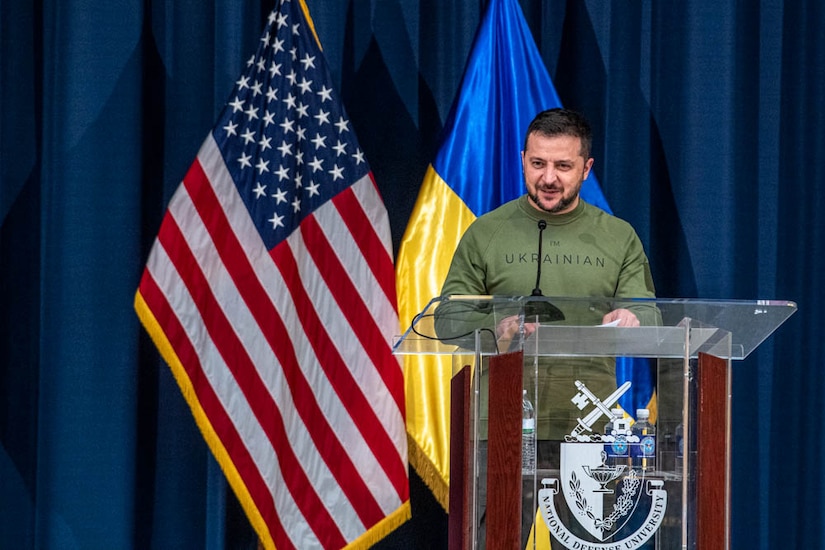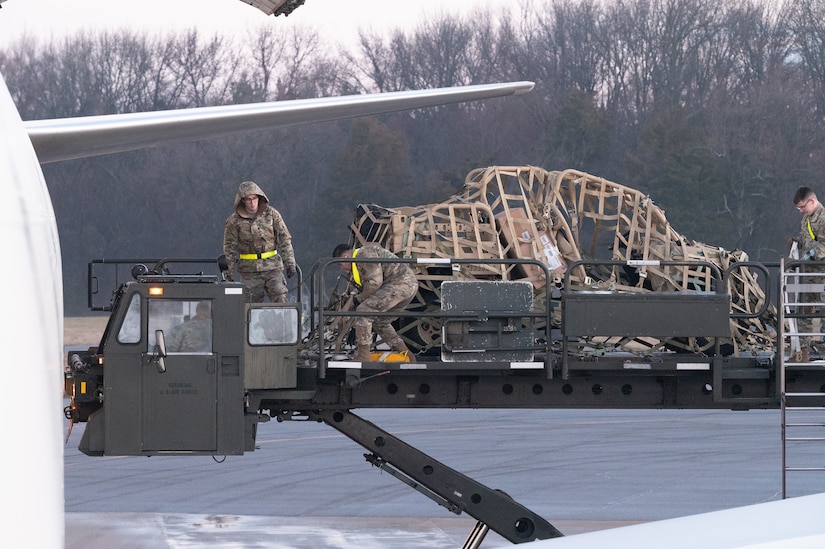A new paper co-authored by Professor Pierre Yared shows how geopolitical strength and financial privilege reinforce each other, with implications ranging from interest rates to national security.
Stephanie Walden November 26, 2024
Compared to the rest of the world, Americans enjoy some significant economic perks: relatively low interest rates, more stable prices for imported goods, and greater purchasing power when shopping from many international retailers online. These benefits are due, in part, to the fact that the US dollar is the world’s reserve currency. That means it’s a benchmark for pricing global financial transactions, the preferred medium for international trade, and a safe haven in times of crisis. This exorbitant privilege, as it’s often called, allows the US government to borrow more cheaply than other nations — and wield outsized influence in the global economy.
But what creates this financial dominance? The answer may lie not only in economic factors but in geopolitical might. “Economists have been wondering about what underpins a country’s ability to be a global reserve currency for a long time,” says Pierre Yared, the MUTB Professor of International Business at Columbia Business School. “The novel point we’re making is that this financial status is very much related to the ability to dominate the globe militarily.”
Yared recently co-authored a paper examining this intricate relationship between military strength and global financial dominance. The research found that transitions in military dominance have historically coincided with shifts in financial privilege — and that maintaining the stability of US financial markets is not just an economic imperative but potentially a matter of national security.
Key Takeaways:
- Military might and financial privilege appear to be deeply interconnected, with transitions in global hegemony (world geopolitical leadership) historically coinciding with shifts in currency dominance.
- The US dollar’s status as the global reserve currency is perhaps more closely tied to America’s military power — and perceived likelihood of prevailing in conflicts — than previous economic analysis has accounted for.
- As such, disruptions to US financial markets, such as debt ceiling crises, could have national security implications by potentially eroding America’s borrowing advantage.
- Geopolitical events can significantly impact currency values and borrowing costs around the globe, with periods of heightened tension often increasing the US government debt’s relative value.
The Military-Financial Nexus
Traditional economic analyses have chalked up the US dollar’s dominance to factors like market liquidity, trade linkages, and the sheer size of the US economy. While these elements certainly play a role, Yared and his co-author argue that military power is a crucial, often overlooked factor in this calculation. “If you want a global store of value, you want an asset that will preserve its value in a cataclysmic state of the world,” explains Yared. “Only a government with a very strong military can ensure that a country will most likely prevail and preserve the value of the assets it issues.”
The paper presents several lines of evidence supporting this connection. For one, there’s historical precedent. The study traces the evolution of global reserve currencies, revealing a pattern where emerging military powers often become financial powerhouses — like the transition from British to American hegemony after World War I, which aligned with the pound sterling losing its primacy to the US dollar.
The researchers also assessed how geopolitical risk impacts currency values and borrowing costs. Periods of heightened geopolitical tension tend to increase the US government debt’s relative value. “When that risk goes up, US privilege increases, because financial markets start valuing US assets relatively more,” notes Yared. “Treasury bonds sell at a higher premium during periods of geopolitical stress, because those are the periods when people shift toward the safest assets — and those will be associated with the country most likely to dominate in a geopolitical conflict.”
This relationship is illustrated in Figure 2 of the report, below, which visualizes the link between geopolitical risk and the United States’ borrowing advantages over a time frame spanning 1980 to 2020. The solid line represents the United States’ borrowing advantage, measured as three-year government borrowing costs for other developed countries in excess of the borrowing cost for the United States. The dashed line shows the United States’ geopolitical risk index. Key events like the Gulf War, Iraq War, and Ukraine conflict are marked, showing spikes in both geopolitical risk and the United States’ borrowing advantage, with a 45% correlation between the two measures.
In addition, the study examined the relationship between military conflict outcomes and debt repayment. In the aftermath of war, victorious nations historically tend to repay debts and maintain currency value, while defeated countries often experience significant inflation and currency devaluation. This indicates that military success directly translates into financial credibility and stability. In other words, the country issuing the safest asset is also likely to prevail in a geopolitical conflict and not devalue that asset.
A Game-Theoretic Model
To explore these dynamics further, the researchers developed a theoretical framework modeling interactions between two countries and international investors. The model considers factors like geopolitical risk, military spending, and investor perceptions.
The model revealed a complex interplay of forces. The researchers identified a two-way interaction wherein military strength often confers financial advantages, which in turn enable greater military spending, creating a self-reinforcing loop. However, the model also suggested a potential for fragility in the global financial system: If two countries have similarly deep financial markets, there may be a greater risk of rapid shifts in dominance.
Intriguingly, the model indicated that under certain conditions, a shift in global financial dominance could occur peacefully — without war — driven instead by coordinated changes in investor expectations.
The Interplay of Financial Advantage and Military Might
The research offers several critical insights for understanding geopolitical dynamics, particularly in terms of the relationship between the United States and China. “The United States can dominate militarily and financially in part because it has deeper financial markets and it can absorb a lot more capital than everybody else,” explains Yared.
But this dominance isn’t guaranteed, and the global financial landscape is evolving. China’s efforts to internationalize the Renminbi (also known as the Chinese Yuan) could have significant implications.
“We’re now in a world where capital is polarizing around a Western bloc and an Eastern bloc,” says Yared. “If China does successfully internationalize its currency, then that is actually a national security threat for the United States.” That’s because a globally accepted Renminbi would reduce the world’s reliance on the US dollar and allow China to compete more effectively for global capital, potentially eroding America’s financial and military advantages.
The research goes on to highlight the interconnectedness of economic policy and national security. Events that disrupt markets, such as debt ceiling crises, could have far-reaching consequences. “It’s a national security issue because it means that, moving forward, the United States would have to pay much more to borrow from financial markets to fund its military,” explains Yared.
From the World Stage to Wall Street: Why the Military-Financial Nexus Has Big Business Implications
Geopolitical events aren’t just headlines happening in a vacuum in far-flung corners of the world. Current tensions ranging from Russia’s ongoing war in Ukraine to war in the Middle East to China’s economic ambitions stand to have tangible impacts on corporate strategies and financial markets worldwide. Yared elaborates that some analysts believe we’re already in a second Cold War, which has implications for significant structural changes in international trade and financial flows.
In other words, the stakes are high. This research speaks to future business leaders seeking a framework to anticipate potentially seismic shifts in the global financial order. “The US dollar plays a special role in this world, and our research provides a way to think about counterfactuals and patterns you can observe in markets during times of geopolitical stress,” says Yared. “Our study also explores a critical question: Under what circumstances might the dollar lose its crown as the world’s reserve currency?”
Adapted from “Global Hegemony and Exorbitant Privilege” by Pierre Yared, the MUTB Professor of International Business at Columbia Business School, and Carolin E. Pflueger, associate professor at the Harris School of Public Policy at the University of Chicago.




